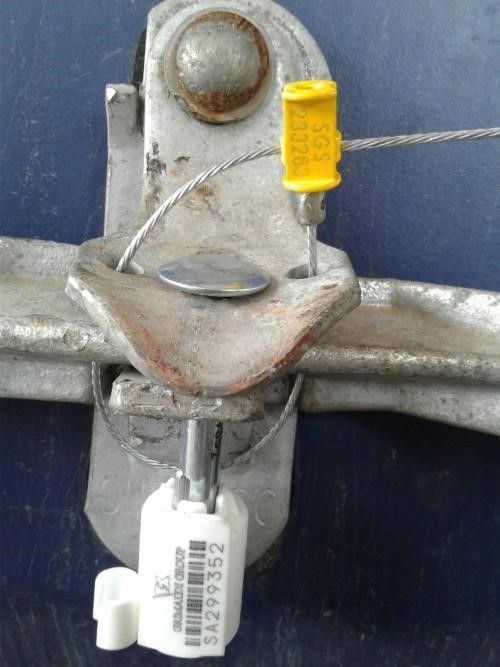Securing Global Cargo: The vital role of container seals
Everyday millions of containers from across the globe are on the move. From flowers, to medicine, steel and milk; your valuable products can vary greatly, but they need to be protected. And for this reason, when a container is loaded it is standard procedure to add a seal to secure the doors. In fact, putting on at least one seal is a requirement by most ports, importers/exporters and government regulators.
Maintaining container integrity
Once a container is sealed, it stays closed until it reaches its final stop. The journey can take days or weeks while your container(s) change hands several times along the way. A seal indicates that the container and cargo condition has been inspected and is positioned in the right manner. Opening a container too soon could lead to problems, like fruits going bad, bugs getting in, or even someone messing with the cargo.
Shipping cargo can be a risky business. From natural damages like storm surges, droughts to harmful human activities like using a container for smuggling drugs, weapons or even people. While security measures like cameras and guards help, the real protection comes from the container seal. It can only be opened by cutting it, and once it's cut, it can't be put back together. This ensures the container stays closed until it reaches its destination.
Each seal has a special code made up of letters and numbers. This code is written down in important documents like the Bill of Lading and the Shipping manifest. When the container is loaded, the code is recorded. Before the seal is removed at the final stop, the person doing the inspection checks to make sure the seal hasn't been tampered with. If there are any signs of someone trying to open it, they tell the authorities right away to investigate.

Finding a suitable seal
When it comes to sealing containers, there are a few types to choose from, and the best one depends on different factors. Seals can vary in size, shape and colour and are often customizable. Your company’s logo can be added to enhance brand visibility and to make replicating it more difficult. Some shipping companies also have their own guidelines about the types of seals to be used. From padlock, cable, RFID, metal strip to bolt seals there are a variety of them to choose from. Often, containers get sealed with multiple types, with each person inspecting adding another layer of security.
Bolt seals
This is the most common seal, and they are usually the standard ones required in regulatory requirements. They are heavy duty and are described as a ‘one-time door lock.’
Advantages
- Easy to use.
- Can withstand various climates.
- High level of security.
- Wide range of applications.
Disadvantages
- Single use.
- Manual handling.
- No data storage capabilities.
RFDI seals
Other seals include Radio Frequency Identification (RFID) seals. These seals use technology and have a chip embedded in them.
Advantages
- Automated tracking.
- Data storage.
- Seal number can be scanned and read.
Disadvantages
- Expensive.
- Can only be read where there are RFID readers.
- Potential for hacking.
Overcoming challenges in seal tampering
Often criminals have their ways around things. They cut the seals and sometimes replace it with a fake one. At times this fake one has the same seal number as the previous one.
Dealing with these challenges becomes easier by embracing technology. One effective solution is Cargosnap. This digital tool not only adds an extra layer of security to your container but also enhances visibility for stakeholders and streamlines supply chain operations.

In the case of reading and manually recording the numbers and letters of seal identifiers people in logistics already know that it’s a task that can be challenging and time-consuming. The Cargosnap app, accessible on your smartphone, simplifies this process. Photos and videos can be taken of the container seal along its travels through cargo container inspections. On top of that, you can scan any barcode or reference, especially the seal identifier. If, at the end of the journey, the scanned seal doesn't match the initial scan, a notification pops up. And most importantly, if the seal may have the same code but a different colour or size of the first seal, this can be seen from the visuals included in the inspections. This is invaluable information for the person performing the inspection and can be another warning sign that the container or its contents have been compromised.
Curious to know more about your container and what the markings on its door mean? Read about it here.





